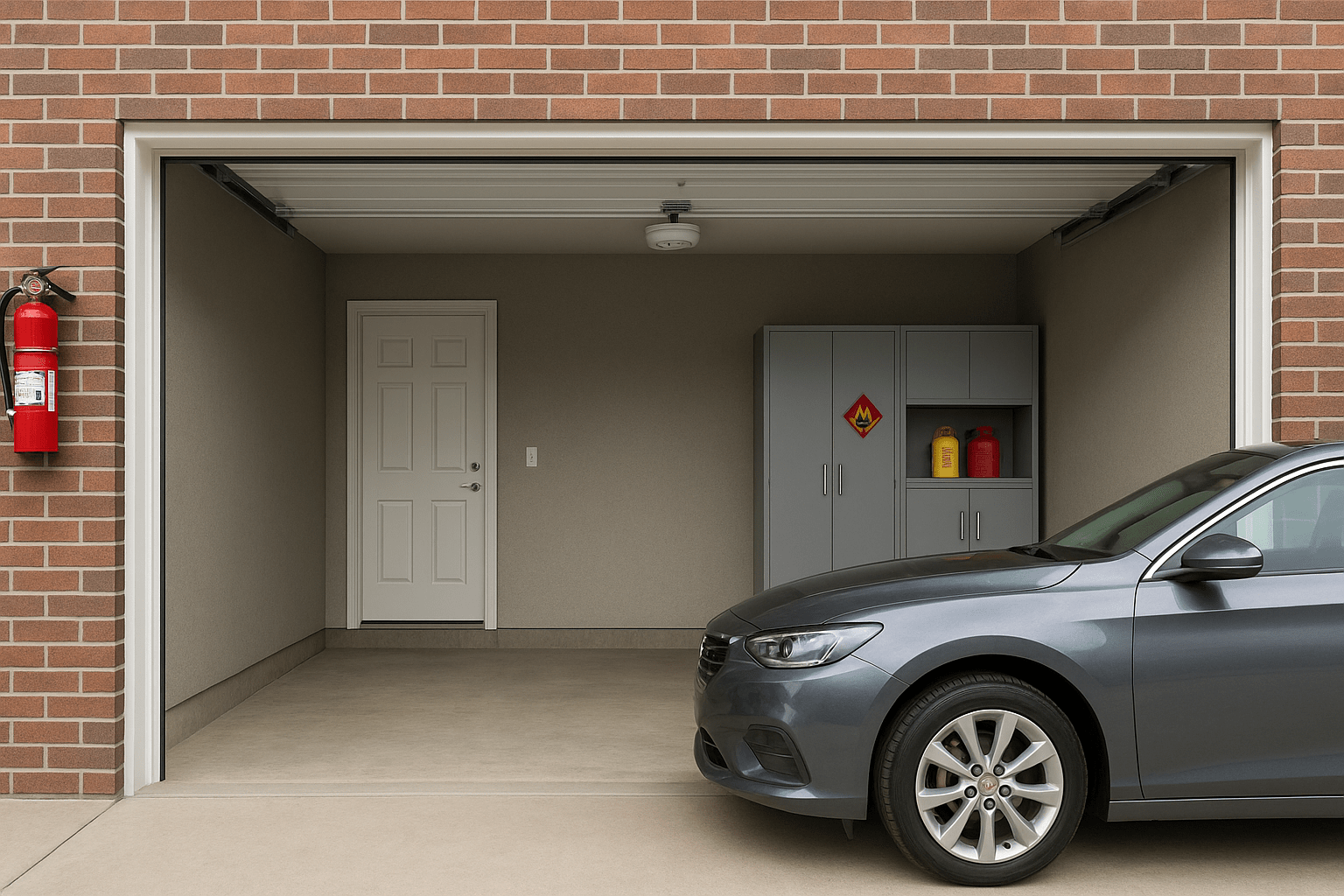
Top 5 Garage Fire Protection Requirements for Residential Garages
Key Takeaways
1. Fire-rated garage doors form a protective barrier between your garage and living areas, preventing house fires from spreading.
2. Make sure to regularly test alarms, store flammables safely, and inspect door seals or closers to keep your garage from becoming a fire risk.
3. Raynor Door Authority helps homeowners protect what matters most by helping with fire-rated garage door installation with expert craftsmanship and reliability.
Top 5 Garage Fire Protection Requirements for Residential Garages
October is recognized as Fire Safety Month, a timely reminder to assess and strengthen fire prevention measures around your home, especially in often-overlooked areas like the garage. Residential garages are common sources of fire ignition due to stored flammable materials, electrical systems, and vehicle-related hazards.
Here are the Top 5 Garage Fire Protection Requirements every homeowner should know:
1. Fire-Rated Door Between Garage and House
The door connecting your garage to your home is your first line of defense against a potential fire. The U.S. Fire Administration recommends installing a self-closing, self-latching door with a 20-minute fire rating.
This type of door slows down the movement of flames and smoke, buying you and your family precious time in an emergency. The self-closing feature is essential; even if someone forgets to shut the door after parking or unloading, it will automatically swing shut, creating that critical barrier.
Pro tip:
- Check the door occasionally.
- Ensure it closes fully, latches securely, and is not obstructed by mats or clutter.
2. Fire-Rated Wall and Ceiling Construction
If your garage shares a wall or ceiling with your home, those surfaces play a significant role in stopping a fire from spreading. According to U.S. Fire Administration guidance, you’ll need:
- A ceiling with 5/8-inch Type X gypsum board (or equivalent) if there’s living space above.
- A wall with 1/2-inch gypsum board (or equivalent) if the garage is attached to the house.
These materials act as shields, holding back flames and heat long enough for you to react safely. Over time, holes or cut-outs for shelves, wiring, or ducts can create weak points.
Simple fix: Patch or reseal any openings using fire-rated compounds. It’s a small step that restores the wall’s protective strength.
3. Heat Alarm Installation (Not Smoke Alarm)
Garages are filled with exhaust, fumes, and dust, all of which confuse regular smoke alarms. That’s why the U.S. Fire Administration advises using a heat alarm instead.
Heat alarms detect dangerously high temperatures or sudden spikes in heat, sounding an alert when a real fire begins to form. They are more reliable in garages because they react to heat, not smoke or exhaust.
For optimal setup, install the alarm on the ceiling and test it regularly according to the manufacturer’s instructions. This one device can be the difference between catching a fire early and discovering it too late.
4. Proper Storage of Flammable and Combustible Materials
Many garage fires start not because of faulty wiring, but because flammable items are stored too close to heating sources. The U.S. Fire Administration is clear: store oil, gasoline, propane, paints, and varnishes in a shed away from your home.
Inside the garage, keep anything that can burn on shelves away from appliances. When charging tools or batteries, plug only one device into each outlet and avoid using extension cords. They overheat easily under heavy loads.
It’s surprising how fast fumes or spills can ignite from a pilot light or spark. A little care in where and how you store these materials keeps your garage safe without limiting its usefulness.
5. Accessible Utilities and Safe Housekeeping
A well-kept garage is a safer garage. The U.S. Fire Administration emphasizes keeping all utility areas accessible and eliminating clutter that could feed or block a fire.
- UL 325-compliant opener with auto-reverse on contact and photo eyes set near the floor. Test with a 2×4
- Keep easy access to the fuse box or circuit breaker panel so power can be cut off instantly
- Call Raynor Door Authority for seasonal tune-ups, seal refresh, and parts that hold up.
- Always keep burner access doors on gas furnaces or water heaters closed
- Store oily rags in airtight containers and never near heat sources
- Don’t store trash in the basement or garage
Common Garage Fire Code Mistakes (and How the Right Door Solves Them)
Some of the most common garage fire code mistakes include using the wrong type of door, gaps, and disabling the self-closing mechanism. These minor code oversights can make the difference between a contained incident and a disaster that spreads in minutes.
Let’s deep dive into them:
1. Using the Wrong Kind of Door
It’s easy to assume any solid door between your garage and house is good enough. However, a hollow-core interior door provides almost no fire protection, as flames can burn through it in just minutes.
Building codes require a 20-minute fire-rated, self-closing, and self-latching door between the garage and your home.
How the right door helps: A fire-rated door automatically closes and seals itself off, buying valuable minutes that can save lives and property.
2. Leaving Gaps Around the Doorframe
Even a fire-rated door can fail if smoke seeps through cracks around the frame. Homeowners often replace seals or weatherstripping with non-fire-resistant materials, unknowingly breaking the protection barrier.
How the right door helps: A proper fire door comes with tested, heat-activated seals that expand when exposed to heat. They seal the edges tightly, preventing smoke from escaping, which is the primary cause of most fire injuries.
3. Disabled or Misaligned Safety Sensors (Photo Eyes)
Photo eyes must sit close to the floor and point straight at each other in your garage door setup. Taping them up high or leaving them misaligned removes entrapment protection and can allow the door to close on a person, pet, or bumper.
How a proper setup helps: Sensors at the correct height with clear sightlines stop the door when something crosses the beam. This preserves UL 325 entrapment protection and prevents force-related injuries.
4. Opener Force Too High or Travel Not Calibrated
Cranking up the down-force to “power through” a sticky door defeats the auto-reverse function. An unbalanced door or incorrect travel limits cause the opener to function as a winch instead of a controller, which can damage hardware and increase injury risk.
How a proper setup helps: A balanced fire-rated garage door with correct force and travel settings reverses on contact and stops cleanly at the floor.
5. Skipping Maintenance and Inspections
A door that once met code can slowly lose its protective power. Hinges loosen, closers weaken, seals crack, and suddenly, the door doesn’t latch or seal properly anymore.
How the right door helps: Quality fire-rated doors are made to last and are easy to maintain. A quick annual check to ensure it closes is all it takes to keep your home protected.
How to Choose a Fire-Safe Garage Door
When choosing a fire-safe garage door, look for a certified fire rating, a self-closing design, and fire-resistant materials. Let’s take a closer look:
1. Check for a Certified Fire Rating
Look for a door that’s been officially tested and rated to withstand fire for at least 20 minutes. That label means the door has survived real heat and flame tests.
An appropriately rated door gives you those extra, crucial minutes to get out safely and stop the fire from spreading.
2. Go for a Self-Closing, Self-Latching Design
A self-closing door automatically swings shut behind you, and the latch locks it in place. It might sound like a minor feature, but it’s one of the biggest reasons garage fires stay contained. A door that closes itself means safety becomes effortless.
3. Choose Solid, Fire-Resistant Materials
Skip the hollow-core or lightweight options. Steel or solid-core wood doors hold up much better under intense heat.
They don’t warp or burn through as fast, which means they keep smoke and flames on the garage side longer. Think of it as adding a layer of strength you’ll hopefully never have to test.
4. Pay Attention to Seals and Edges
The strongest door still fails if smoke can slip around it. Look for fire-rated seals or intumescent weatherstripping, which are special materials that expand when exposed to heat, thereby closing off tiny gaps around the frame.
Over time, these seals can dry out or crack, so check them periodically and replace them if they appear worn.
5. Make Sure It Matches Your Wall’s Fire Rating
A fire-rated door only works if the wall around it can handle the same stress. If your garage wall connects to the house, it should have ½-inch to ⅝-inch Type X gypsum board or another fire-resistant layer.
Together, the wall and door form a complete barrier, keeping fire and smoke contained where they start.
6. Add a Heat Alarm Nearby
Garages aren’t ideal places for smoke detectors, as exhaust and dust can trigger them unnecessarily. A heat alarm is a better fit.
It triggers when the temperature suddenly spikes, giving you an early warning before things get out of control. For best results, connect it to your home’s central alarm system so the whole house gets the alert.
7. Have It Installed Professionally
Even the right door won’t do its job if it’s hung unevenly or the frame isn’t sealed tightly. A professional from Raynor Door Authority will fit, align, and test every part so there are no weak spots.
After installation, perform a quick annual check to ensure it still closes and latches properly, or schedule an inspection with our experts at Raynor Door Authority to maintain its condition.
Secure Your Home With Professional Garage Door Installation From Raynor Door Authority
Your garage door protects your home, adds to its curb appeal, and signals how much you care for it. If you’re replacing an old door or planning an upgrade, choose one that balances fire safety, durability, and design, ensuring your home remains secure and looks refined for years.
That’s where Raynor Door Authority stands out with expert installation and attentive service.
- Run a five-minute safety check. Test the garage heat alarm, confirm the entry door self-closes and latches, and clear a three-foot zone around heaters and appliances.
- Fix the high-risk items today. Move flammables to approved containers, uncoil and unplug risky chargers, and replace cracked seals and damaged cords.
- Book a pro visit with Raynor Door Authority. Get the door balanced, the opener set for safe reversal, and perimeter seals fitted so your garage protects your home.
Your home deserves a door that is strong, smart, and beautiful. Contact your nearest Raynor Door Authority location today to book a consultation and enjoy lasting peace of mind.





